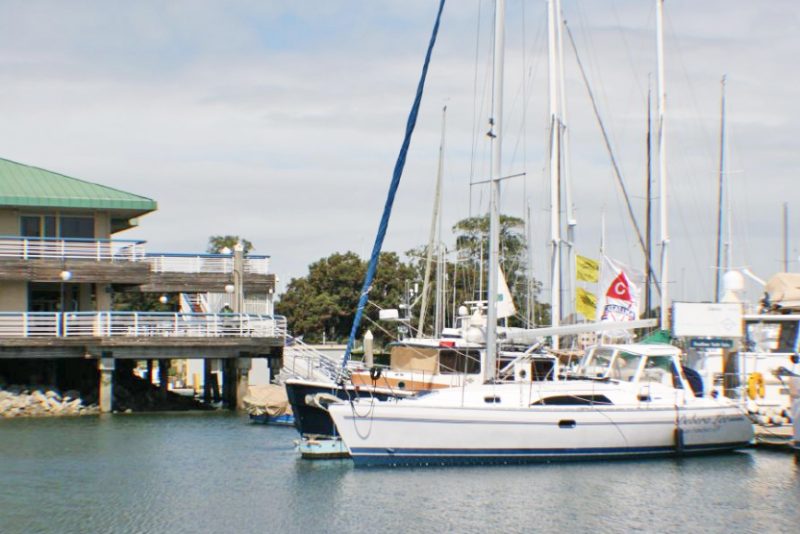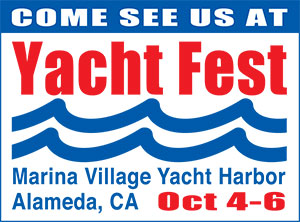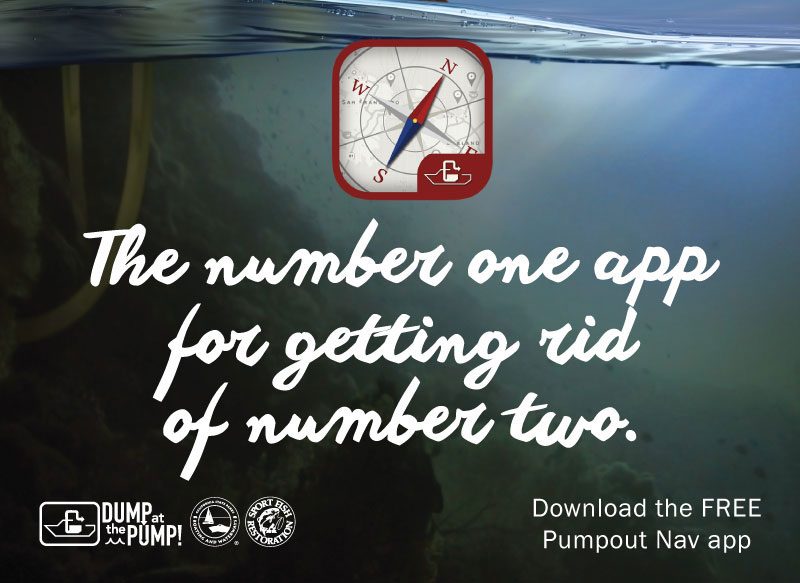
Randall Reeves Racing South Toward the Golden Gate
We’ve tried to retrace Randall Reeves’ steps to see when he last made any southing. Not counting a few southerly drops in the Northwest Passage, it’s been a minute. After sailing out the Gate almost exactly one year ago, Reeves made a bee-ish-line for Cape Horn, headed east for three months, took the Horn to port again and shot north for the Arctic. Reeves finally made some westing when he left Greenland for the Northwest Passage, but south hasn’t really been in his vocabulary since last year.
“Now we have turned south for the final rounding of Point Barrow,” Reeves wrote on his blog last week of the northernmost point of the United States. “South. I repeat. At 71° 28N and 155° 58W, we have turned south. From now on, every mile will bring us closer to home.”
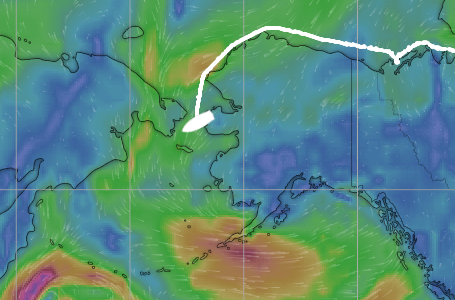
We feel confident, though admittedly trepidatious, in saying that Randall Reeves has entered the homestretch of his five-ocean, two-circumnavigation Figure 8 Voyage 2.0. Reeves appears to have departed Nome — which lies well north of the Aleutian chain — within the last 36 hours, and hopes to sail back under the Golden Gate on October 19.
Reeves recently spoke to Ben Shaw, host of Out The Gate Sailing, about his time in the Northwest Passage, and his final-ish stretch of 2,500-ish miles. “It’s probably the equivalent of a jump from San Francisco to Hawaii — maybe it’s a little bit further.” Reeves said. “And, when you’ve sailed something on the order of 36,000 miles in a year, and when you did 26,000 miles in the year previous, [2,500] doesn’t seem like a lot. The challenge, of course, is the time of year and where I am — I’m still in the Bering Sea; we are still at 60°-something north, and we’re late in the year. The low pressure systems are rumbling through, one right after the other, and in the Bering Sea, those are very challenging. [It’s] very shallow and has a strong current, so it could kick up a sea very easily.”
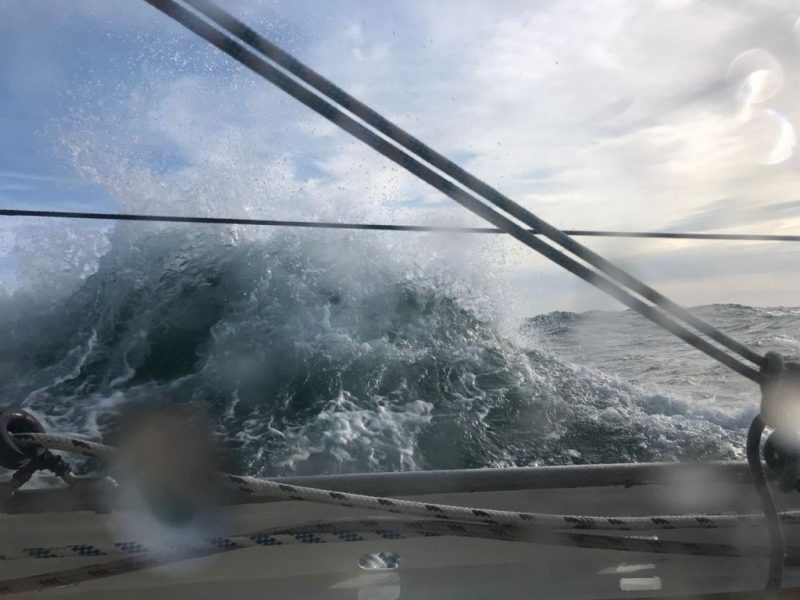
Reeves said that he will have to pick and choose his weather windows very carefully. He has his eye on the Aleutians as a place to hide out if the conditions turn sour. “It’s a challenging run from here to home,” Reeves said.
Finally transiting west and south, Randall Reeves has been continuing his Arctic tour of tiny, isolated, idiosyncratic towns rimming The North. Motoring out of the narrow confines of the Northwest Passage in early September, Reeves stopped for fuel in Tuktoyaktuk, or Tuk, a “hamlet” in Canada’s Northwest Territories. “Fuel, a burger, a cold coffee and a small bag of groceries, including a $16 frozen cowboy steak and a $9 box of spinach, came to nearly $900,” Reeves wrote. “I don’t mean to suggest that those passing through are being gouged. Rather, the high cost of pretty much everything up here reflects the difficulty of getting it here in the first place.”
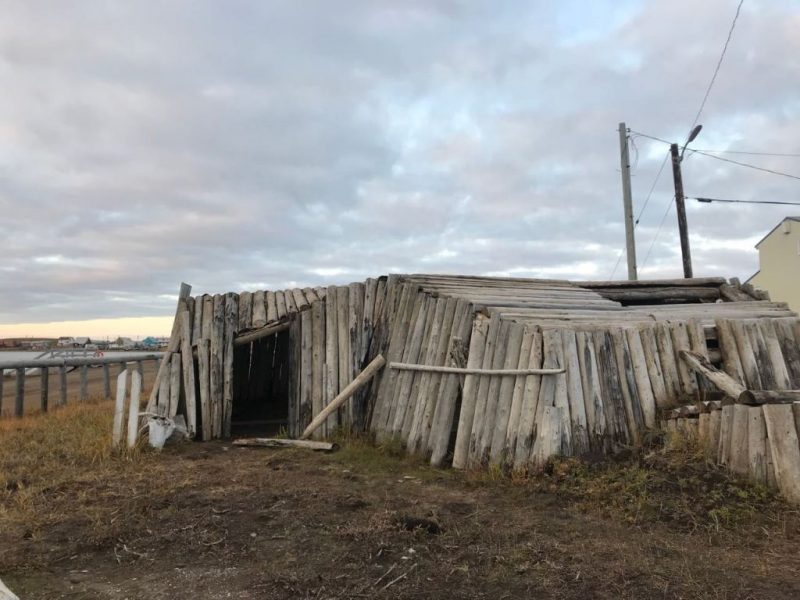
After Tuk, Reeves made his run to Nome, sailing back into the United States, and completing his Northwest Passage — though he put to the test exactly what an actual “Passage” entailed. Reeves originally believed that the Northwest Passage was defined as “a route over Canada and Alaska from Arctic Circle to Arctic Circle.” He consulted a publication by the Scott Polar Research Institute in Cambridge, and was also informed by his Northwest Passage “ice guide” that a complete transit is considered sailing “from Atlantic Ocean to the Pacific Ocean, or the reverse.”
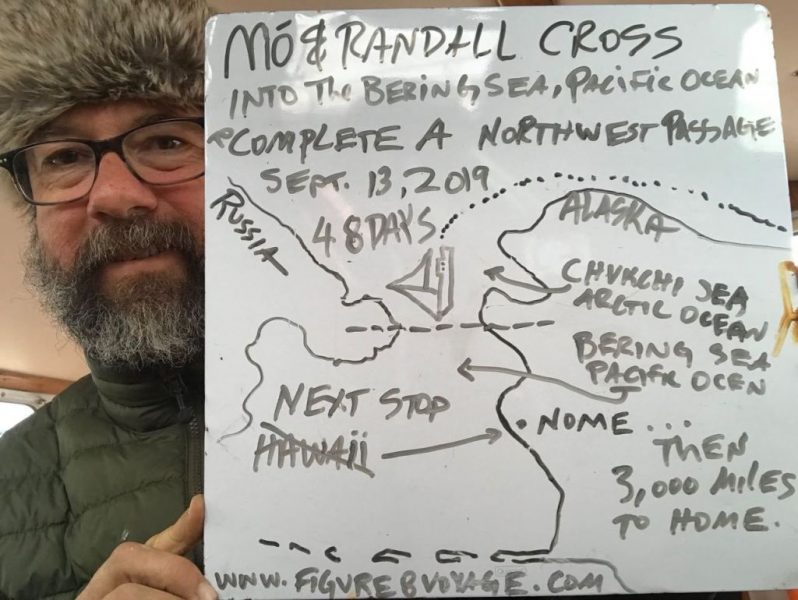
Reeves arrived in Nome at night, meeting up with some of his Northwest Passage cadre. “The crew of Morgane, Mirabelle, Opal, and Alioth, all now Northwest Passage veterans, have seen Mo safely in, after which we repair to Alioth’s cabin for a toast and the sharing of stories until 2 a.m.”
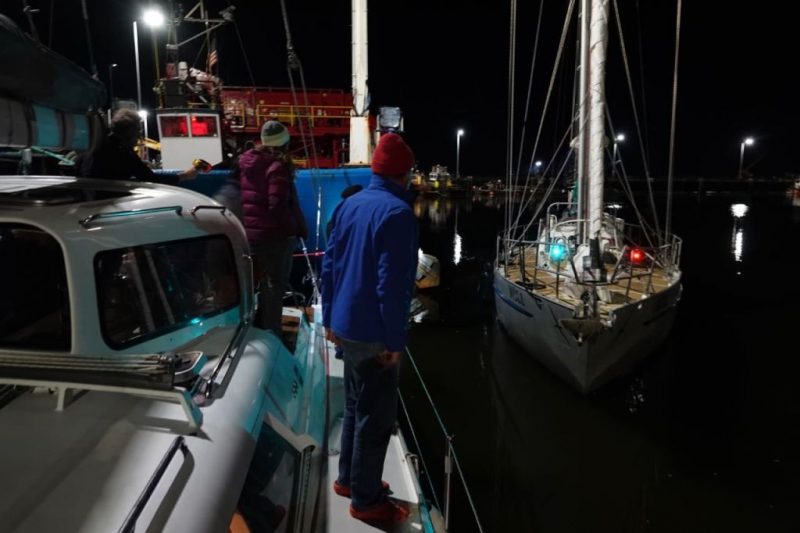
In Nome, Reeves stumbled into a bizarre frontier teeming with reality TV. You read that correctly.
“The towns of Alaska are unique in ways not found in the Canadian or Greenlandic north, and emblematic of this uniqueness is the great number of reality TV shows that have sprung up along its shores. Dutch Harbor has its Deadliest Catch; Homer, Alaska: The Last Frontier. In Nome, the pay dirt is mining and the show, Bering Sea Gold.

“One of my first sights (sorry, I was too arrested to take a photo) was a fight along the wharf between a small dredge owner and his wife. It was a screaming match that lasted hours. Take after take with the lone cameraman moving between the dredges and the wharf for clever angles.”
Finally, Reeves challenged Nome’s “famous descriptor,” where the visiting sailor (or Iditarod finishers) will find more bars than churches. “I did not attempt a count, as such, but I discovered on my hike only three churches, whereas on the town’s main drag, a person could stagger from one bar to the other without becoming overly winded.”

Sailors Beware: Hurricane Season Is Here
Following Monday’s story on the amazing escape of Josh and Christina from Hurricane Dorian, we find ourselves in the peak of hurricane season with other threats looming. Hurricane Humberto is moving toward Bermuda, and Tropical Storm Jerry has formed just to the east of the Leeward Islands, and is expected to reach hurricane strength before reaching the islands on Friday. Tropical Storm Imelda has passed over the Texas waterfront and is now dropping heavy rain there.
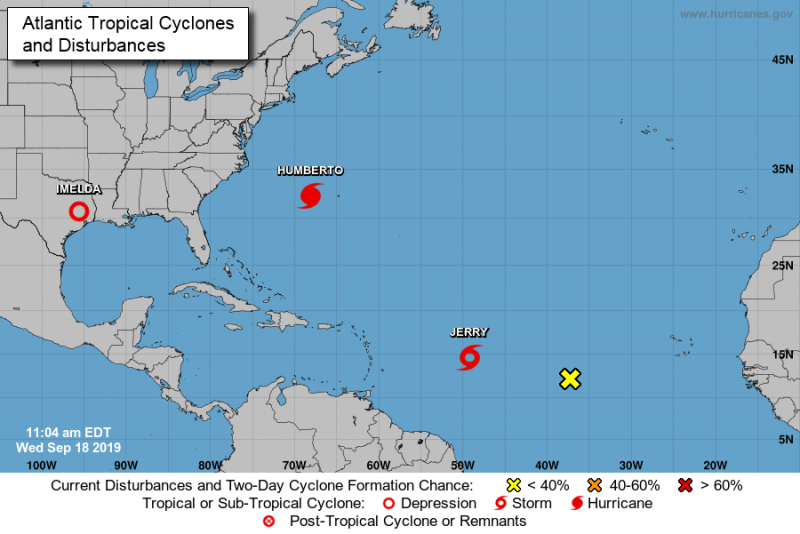
Meanwhile, on the Pacific coast, a similar situation is unfolding. While Tropical Storm Lorena looks like it won’t pack the punch of Jerry in the Atlantic, it could still cause problems along the west coast of Mexico — winds of 50 knots and heavy rains are forecast. It’s always advised, for anyone leaving a boat in the hurricane belt, to strip it down as much as possible by removing roller furling gear, mainsails, dodgers, solar panels, and anything that presents extra windage to a storm. Fenders, dock lines, anchors and chafe gear all help to make a boat as safe as possible in these conditions. Of course, if you happen to be at the wrong place at the wrong time — like Hopetown during Hurricane Dorian — there just may be nothing you can do to preserve a boat. During those times it’s best to focus on preserving yourself.
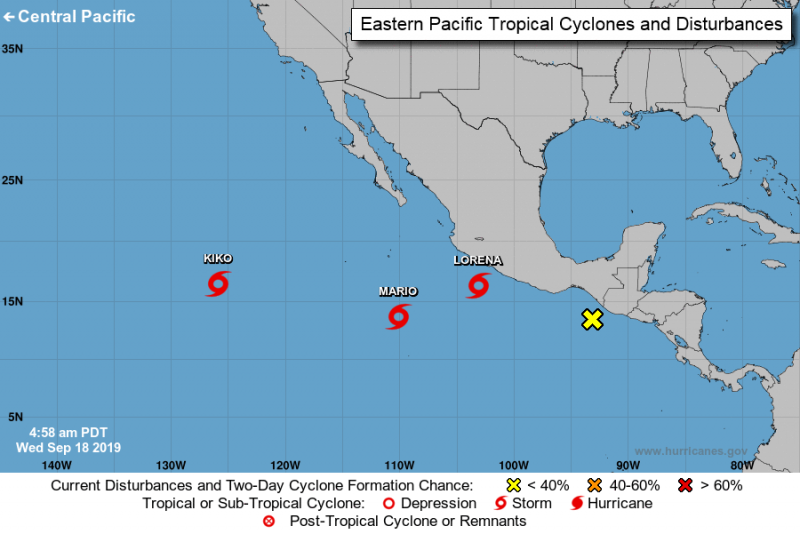
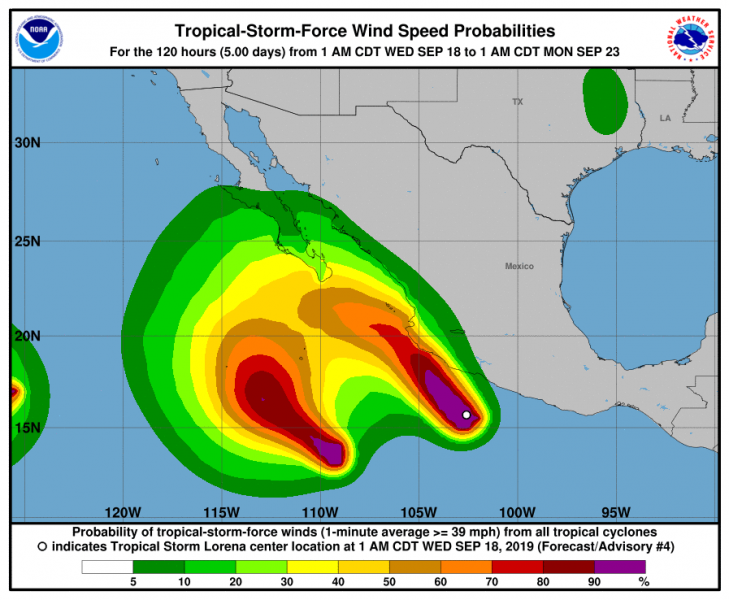
It’s an unnerving time to be a boat owner, harbormaster or resident as hurricane season roars through. We worry about fires here in California (even as it rains a bit today) and the tropics are worried about hurricanes. We hope all these threats pass uneventfully and without the terrible ferocity of Dorian, and that the rest of hurricane season settles down over the months ahead.
Right now, NOAA charts (which have been contentious lately) show that most of this current activity won’t be nearly as powerful or concentrated on boating population centers as Dorian was, but this is subject to change. We are looking forward to the end of October, allowing the Baja Ha-Ha and other sailors to head toward a glorious cruising season in Mexico and the islands.
Come See This 2014 Catalina 355 Series 5 at Yachtfest
SailGP on the Med and in Your Hand
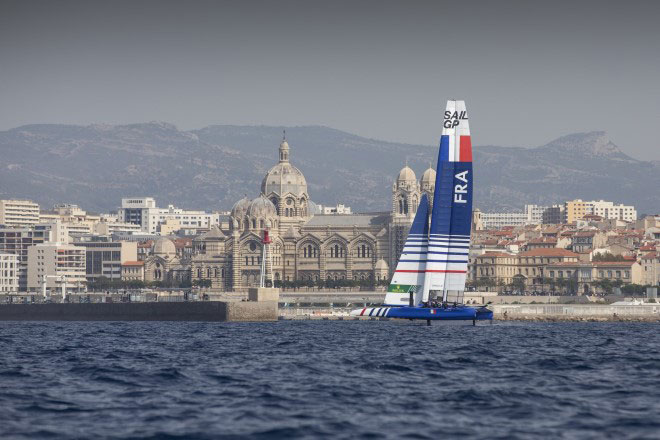
The SailGP season will wrap up this weekend in scenic (that’s an understatement) port of Marseille on the French Riviera. Can’t be there? Neither can we. But your options, like ours, abound.
Virtual Regatta
Not the least of opportunities for armchair-sailor engagement is Virtual Regatta. eSailGP will even count as a regatta in the eSailing World Championship. Yes, computer gaming has evolved into serious business. For eSailGP, the eF50s are a digital representation of SailGP’s 50-ft foiling catamarans. The press release promises that they’ll “match the look and performance of the real vessel, capable of breakneck speeds in the 50-knot range on courses mirroring those used in SailGP.” The league’s CEO, Sir Russell Coutts, says that by joining the ranks of virtual regattas, SailGP hopes to reach “both existing gamers and those new to esports.” The eSailGP schedule includes Digital Challenges throughout the week, eQualifications and eFinals on Saturday, and live streaming on www.esailing.tv.
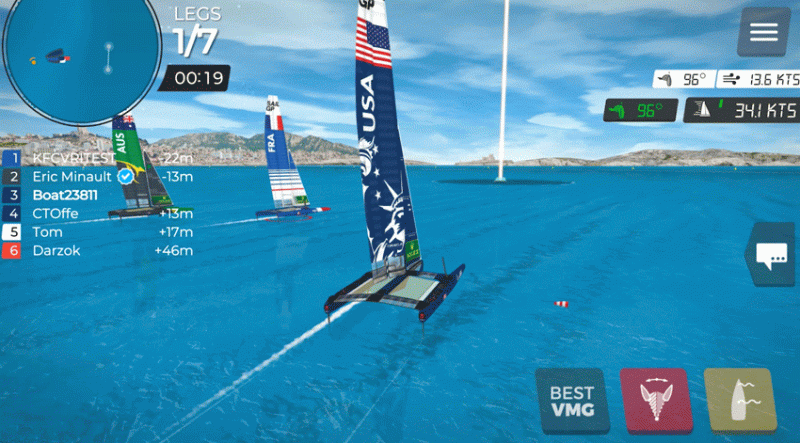
Actual Regatta
More interested in the actual on-the-water finale? Here’s the skinny:
The six teams will race on Friday, Saturday and Sunday. See the schedule here. Three races are planned for each day, with Sunday’s last race a final match with the season’s top two teams going head to head for the SailGP Championship trophy and a winner-takes-all US $1 million prize. Australia’s skipper, Tom Slingsby, leads the overall standings by 4 points ahead of fellow Australian Olympic gold medalist Nathan Outteridge, helming the Japanese team.
To hold the regatta in the palm of your hand, download the app here. Other live viewing options in the USA include Facebook and YouTube (warning: mute your device if you’re in a public place; it auto-plays and it’s loud). CBS Sports Network will show delayed coverage.
What, you say you are in Marseille? Lucky dog. You have your choice of spectating from the free Fan Zone or buying tickets to three levels of grandstand experiences or two levels of on-the-water craft.
Next Year
SailGP has already announced that Sydney will host the 2020 season opener. SailGP will return to Sydney Harbour on February 28-29 for the first event of Season 2. Tickets will go on sale November 1.
For much more on all of the above, see https://sailgp.com.

